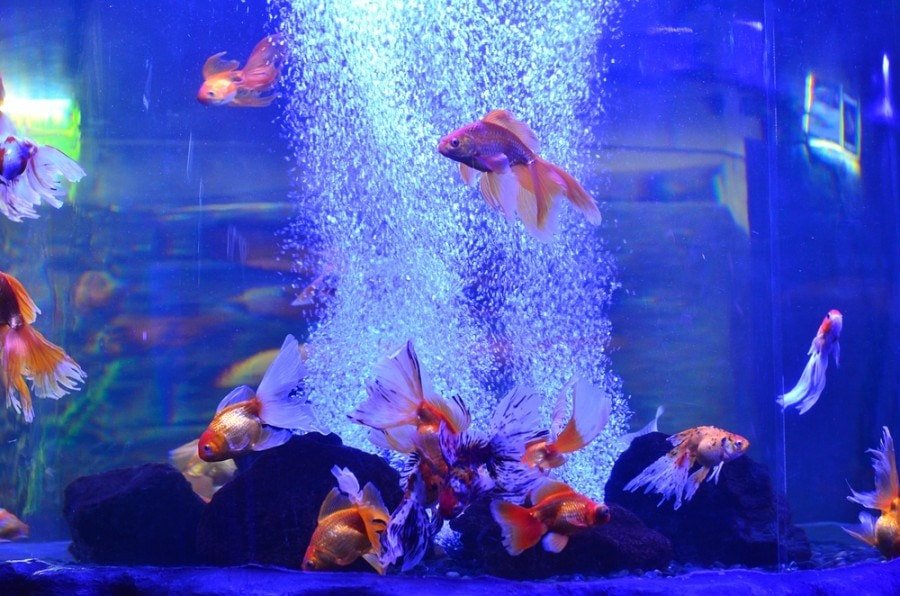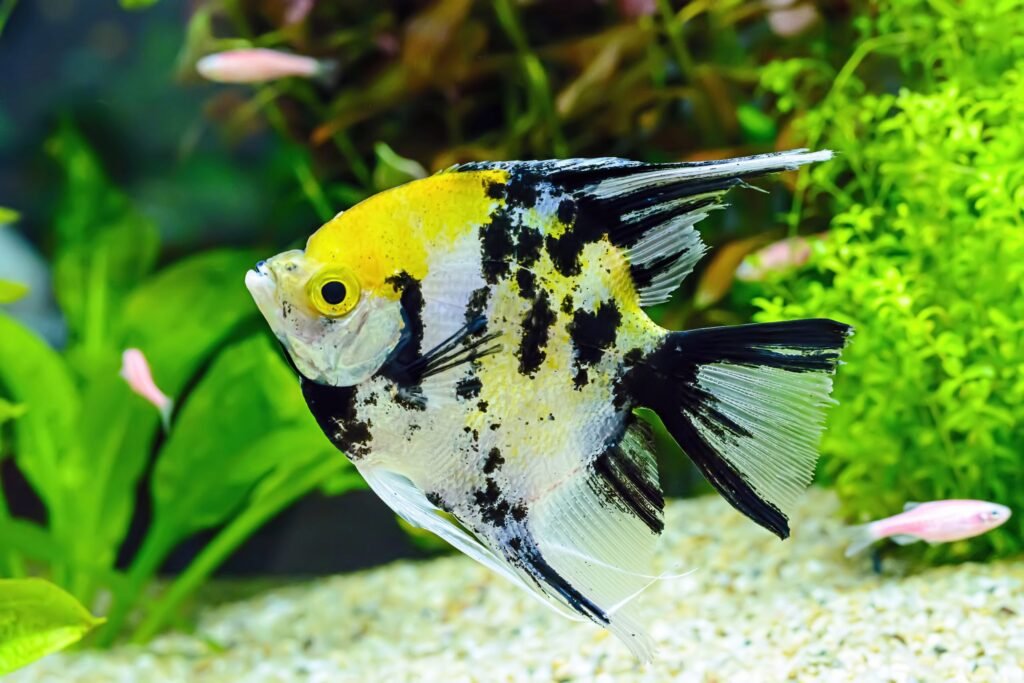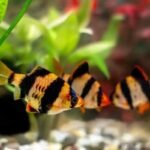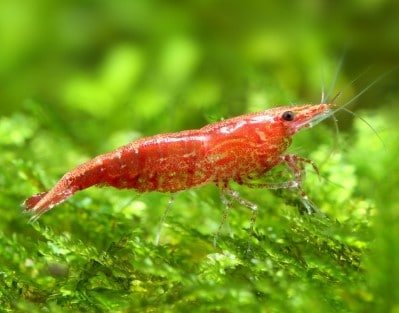A low level of oxygen in the fish tank can make it difficult for fish to breathe. At high concentrations of oxygen dispersion, bubbles form in the lining of the skin, gills, and eyes. Therefore, adequate levels of oxygen are needed to keep a fish healthy.
How do I Oxygenate a fish tank without a pump?
In an emergency, you can increase the oxygen in your fish tank by pouring water from a high height using a cup. When oxygenation is low, you can do a 50% water change. If there is barely enough water flowing into the pond, algae and plants thrive by reducing and lowering oxygen concentrations. Insufficient airflow can reduce life expectancy, causing fish to become very stressed and die quickly.
How to increase oxygen in a fish tank
Undoubtedly a big mistake by any first-time aquarist is not feeding fish sufficient oxygen. In fish tanks, proper oxygen can be essential for healthy fauna. There exist various reasons why oxygen levels have dropped in tanks. Fortunately, there are still ways to correct the issue and prevent it. Learn how to increase oxygenation in aquariums to keep fish alive.
How do I get more oxygen in my fish tank?
Lowering oxygen levels can cause serious health problems and can even kill fish. There are a few possible causes for low oxygen in fish tank conditions, but fortunately, there are several solutions to the problem. We have to talk about getting more oxygen into your aquarium and simple solutions to fix low oxygen levels.

Signs of low oxygen in a fish tank
Your fish’s rude behavior should alert you. Low oxygen is generally not a problem in a well-stabilized and reliable aquarium. Certain fish occasionally “choke” underwater; this problematic behavior occurs when fish stay close to the water’s surface and continually try to swallow more water; this is a vital sign of poor oxygen water.
Causes Of Low Oxygen In A Fish Tank
Many fish will cause an imbalance between oxygen absorption and carbon dioxide buildup in aquatic environments. Insufficient aeration can cause reduced water movement, reducing the level of gas exchange. Stagnant aquarium water can also pave the way for algae overgrowth. Clogged filters and media drastically reduce filter flow capacity. Adding antibiotics to treat illnesses can also cause decreased oxygen levels. Live aquarium plants provide oxygen when your need is met. Plants cannot convert carbon dioxide into oxygen if lights are off for at least six to 8 hours a day.
Ways to increase oxygen in the fish tank (Permanent solutions)
HOB filters can help your aquarium maintain proper levels of oxygen. They’re relatively small & relatively easy to use. Use a sprayer to distribute water through the tank evenly. A fountain can help increase the oxygen content in your lake. Use an air pump to bring oxygen inside the tank through an air stone. The air pump collects the air and ejects it into the tank through the stone.
Some tips
Fish usually go on a surface to consume oxygen as they have the most dissolved oxygen at the surface. A fish may survive for only some days without oxygen. If your fish comes off to the water surface looking to breathe, it will signal that the aquarium has inadequate oxygen. Significant water changes (up to 50%) of the tank water are an excellent way to add some fresh air; this way, you can effectively deal with the low oxygen level present in the tank.
What causes a lack of oxygen in fish tanks?
If you have a fish tank with high-temperature water, this could be causing problems with oxygen. Water at high temperatures does not retain oxygen like cold water. The lack of moving water causes a low oxygen level because the movement of water aids in the gas exchange of the aquarium water.
How does oxygen dissipate in a fish tank?
Photosynthesis is how plants use lights and carbon dioxide to generate food for themselves. As a byproduct, they also generate oxygen which will remain dissolved in water. At the same time, gas exchange between the environment and the water surface is constituted in a constant diffusion effect. Oxygen enters through the air into water, transferring carbon dioxide.
How much oxygen do fish need?
The safe level of oxygen depends on fish species. Bottom-dwelling shrimp require 1-2 grams of dissolved oxygen to live. The widely accepted standard for DO is 4 – 5 mg/L fish can suffocate under three mg/L. Healthy tanks should have 70% oxygen saturation. Fish can thrive and prosper without problems if water is provided with oxygen. But trouble arises when the water has become supersaturated. It’s a root cause of gas bubble diseases. In the fish tank with high amounts of oxygen, bubbles appeared forming on the body tissues of the fish. You can see the bubbles under their fins, noses, and ears.
Signs Of Too Much Oxygen In A Fish Tank
Fish native to slow-flowing or stagnant waters can become overwhelmed by increased circulation of water. By definition, Bettas is no big fan of filters having high flow rates. The constant motion of the filters and the bubbles may cause too much water turbulence. If you see fish floating in the current, it’s time to reduce aerators. It is a non-infectious condition that often creates trauma and stress. Provide the fish with a good escape and shelter.
What’s the difference between oxygen and aeration?
Oxygen refers to gas exchange that occurs at the surface when water meets atmospheric air. Aeration covers oxygen production but is linked to the motion of water inside a fish pool (water flow/current). While oxygenation occurs directly at the surface, water aeration would effectively distribute oxygen-rich water evenly within the tank. You can use oxygen test kits to test your aquarium’s oxygen levels.
How do I increase the oxygen in my tank in an emergency?
Your fish is suffocating through lack of oxygen, and they need immediate oxygen. Here I’m going to tell you how to get more oxygen inside your tank quickly. When water is pouring from the top, it will aid in aerating it in water and increasing its tanks’ volume. Another way to increase the water is to do a big water switch (up to 60%of the tank). Use ice cubes to cool down the water by putting ice cubes in a Ziploc bag. An emergency battery air pump can move the water around during an electrical emergency.
How do you know if your tank has a low oxygen level?
Some signs can warn you if fish tanks have low oxygen value. Fish come and gasp on the surface if they reach the surface of the water and gasp with a large mouth opening. If your fishes were breathing slowly and you saw more quick gill movements, this could indicate an aquarium’s loss of oxygen levels. Fish move around less; they swim less and slower than usual.
How do I know if oxygen is low?
You can tell if a fish tank lacks adequate oxygen through the behavior of its fish. A good test kit can measure the levels of dissolved oxygen in the water; the aquarist should monitor the oxygen levels in the fish tank for indicators of low grades.
Some causes and solutions of low oxygen levels
Several factors can affect the low oxygen level in the water, but each one has an acceptable solution. Adding air stones and an air pump is always a possible way to increase aeration. They would be the best solution significantly if they would help mitigate the various issues we talked about.

Overcrowding
A small-sized water reservoir should have enough oxygen to spawn a small amount of fish. There are too many fish in the tank to support oxygen consumption. The solution is a smaller population of fish for larger tanks. You can also separate fish and house them in more than one tank. Air stones and air pumps can undoubtedly help with this problem too.
Too much waste
When too many fish are in one tank, they leave a tremendous amount of waste. A discharge of ammonium and nitrites in wastewater causes oxygen depletion. In addition, too many algae in the water are unable for the water to absorb oxygen. It would only require water replacement and cleaning the tank. A clean filter should eliminate a lot of waste, which also gets rid of any harmful algae infiltration tanks. The disposal of the trash in the tanks could increase the storage capacity of oxygen.
Not enough water movement
Oxygen from stagnant water will dissolve in minutes. This is especially true with tanks because the gas exchange is non-existent. Injecting air into the system will encourage water circulation through the tank and contribute to a positive exchange of oxygen at the top of the tank. The problem can be solved by cleaning a filter that doesn’t work, or you might also need a more powerful filter.
A high water temperature
Hot water retains much less oxygen than cold water. Many of your fish or plants require hot water for their survival. If the temperature is too high, you can do a 50% water change. Some ice cubes can be placed in a plastic bag and placed in an aquarium. Have a good water thermometer so you can observe the water temperature and turn off all lights and heaters in your aquarium.
Can you have too much oxygen in a fish tank?
There can be a gas bubble disease if the gas bubble leaks out of the solution inside the fish. Air bubbles can also generate under the skin or around the eyes. Always make sure that the aquarium has enough oxygen, correctly sized for the species that inhabit it.
Too many live plants
If there is light, plants release CO2 from the water and generate oxygen. But when the light bulbs go out, so do plants that absorb oxygen and produce CO2.
Why do my fish gasp for air?
This can sometimes mean that fish are dying from having too little dissolved oxygen in their aquarium. Sometimes, panting can mean other illnesses as well – inadequate water temperature or contaminated skin. However, the most common scenario for a panting fish is the need for a little more oxygen.
Chemicals
Some chemical products used by water treatment companies may affect the oxygen level in water over time. If you mix dissolved oxygen in water, check for the ingredients and the label.
How do I check the oxygen level in my fish tank?
The most effective way to measure dissolved oxygen in fish tanks is using a water dissolved oxygen meter. Without a test, it is impossible to tell. The item can never be seen in sight by eye, smell, or feel by hand. An oxygen meter is the only answer.
What are the signs of low oxygen levels in fish tanks?
Fish keepers usually anticipate this phenomenon by closely following animals’ behavior. Fish will exhibit some visible signs if tank oxygen is low.
Gasping on the surface
Occasionally the fish, including Bettas, Gouramis, and catfish, come to the surface and take a gasp of air. They won’t stay on the surface any longer unless something goes wrong. Some other fish will lie on the substrate when oxygen levels drop. If you see a fish species panting toward the surface, it could indicate that your tank is out of oxygen.
Difficulties in breathing
The fish “swallow” the water that passes through the gills and filaments, where oxygen and carbon dioxide are exchanged. Excessive gill movement and labored breathing indicate lower oxygen.
Slow fish movement
Insufficient oxygen can stop fish from swimming naturally. They will slow down your movements and appear stagnant. Although some fish don’t constantly move, it can signal low oxygen when you see this behavior frequently. Oxygen is the fuel that keeps animals alive.
Lack of appetite
Under low oxygen conditions, fish don’t eat as often. If you notice fish in your aquarium that doesn’t eat voraciously, this could indicate health problems.
Tell me the cause of low oxygen levels?
You know the signs of lack of oxygen inside your tanks and now let me reveal the causes. If it’s easy to find and determine the cause of the problem, it will be resolved quickly.
Waste accumulation
Overstocking, overfeeding, neglect, and poor cleaning are major causing of waste problems. Uneaten food that accumulates due to a lot of overeating and clogged filters can also help accumulate waste. Bacteria need more oxygen to break down waste, thus decreasing the aquarium’s oxygen-carrying capacity. Oxygen will be lost, contributing to the formation of toxic gases, including ammonia, that can be lethal to fish.
High water temperature
Coldwater can carry much more oxygen than hot water. Many fish in tropical aquariums survive comfortably in a range between 75 and 80 degrees. As temperature increases, the strength of oxygen decreases.
Heavily Planted Tank with Low Lighting
Plants consume carbon dioxide in water and release oxygen in photosynthesis with sufficient light exposure. When there is no light, they absorb oxygen, but they emit carbon dioxide, and they emit carbon dioxide. Algae also work the same way as live plants, so the right amount of light is essential to check algae activity and maintain good quality oxygen.
Lack of water movement
Aeration is a way in which oxygen penetrates the water. Oxygen typically is rich near the surface but doesn’t reach the bottom for lack of agitation or circulation. The movements of the water help to oxygenate the entire amount of aquarium water. Stagnant aquarium water will lead to low oxygen levels.
Overstocking
Overstocking is often a cause for lack of oxygen. Too much population requires even more resources. Most Beginners make this mistake at their initial stages, as overstocking can even lead to other problems.
Pour water from a height.
The higher the elevation, the more oxygen will enter. Repeat it sometimes. You can also do it while adding more water when the water is changed. Position a plate on the substrate to prevent mixing it into the water.
Use of certain chemicals
Common chemicals and additives may cause low oxygen levels. Therefore it’s always beneficial to be retrospective whenever you use chemicals in your aquariums.
Water change (50%)
A water change replenishes the oxygen in your aquarium. Change 50 percent of water and use fresh water.
Agitate the water manually.
Stirring up surface water is a straightforward way to increase the levels of oxygen.
Solve the problem with live plants in your tank
Adding more light will help living plants absorb more CO2 and increase oxygenation. Try to balance the number of plants in the aquarium with the amount of oxygen in the water.
Check the water temperature and make adjustments.
The water temperature must not exceed the ideal parameters to keep the chosen species. Usually, oxygen will be low if the temperature is high. Always use an accurate aquarium thermometer to monitor your water temperature every day.
Create more movement in the water
The use of powerheads creates simple movement in the water. If you already have a filter and your fish don’t get enough oxygen, you can add a powerhead. As an alternative, we can even use air pumping as a supplement. If your tanks are more significant, you may want more powerheads as the size of your tanks gets bigger. Using small overhead rocks or air pumps, add water flow at different locations in the tank to ensure a steady flow of water into the tank.
Proper and frequent tank cleaning
Fish need some bacterial diversity in the aquarium to survive. Clean your aquarium, scrape the inside of the glass, vacuum the substrate and change the water. Use paper towels to scrub the front of the tank. Use the toothbrush exclusively for cleaning items in the tank.
Solve overcrowding
There may already be excess capacity in fish tanks due to a lack of oxygen. Transfer other fish to a different tank to reduce overcrowding.
A solution to too much oxygen in a fish tank
A good quality water filter should have an adjustable flow rate. Remove aeration instruments one at a time until you settle on a system that maintains aerated/oxygenation at an optimal level.
Conclusion
If the water temperature reduces oxygen levels in the fish tank, this can be controlled by lowering the temperature with ice cubes or proceeding with a water change. The permanent solution to low oxygen levels includes using a filter with a spray bar or an air pump. Using a fountain is a great way to oxygenate your lake water.





![Top 9 Best CO2 System For Planted Aquarium [Updated 2023] Top 9 Best CO2 System For Planted Aquarium [Updated 2023]](https://aquariumhunter.com/wp-content/uploads/2021/06/shutterstock_1362141863-900x500.jpg)

